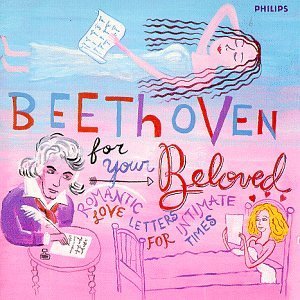 |
| "Can you make it more 'Romantic' sounding?" |
I came across this fascinating webpage project created by Steven R. Livingstone where he actually uses musical characteristics of tempo, key, harmonic complexity, pitch register, articlulation, loudness, etc... to "filter" works by Beethoven, Mendelssohn and Mozart to produce alternate "feelings" than what a listener would normally feel. In other words, a piece usually regarded as being "happy" could be altered to sound "sad" (or make the listener feel sad).
On Livingstone's webpage you can actually download recordings of Beethoven's Piano Sonata No. 20, Op. 49 No. 2 in G Major in 5 different "versions":
To create the Happy version, he made the tempo 'fast', the mode 'Major', the Harmony 'simple', the pitch 'high', the loudness 'Loud', the articulation 'staccato', etc....
To create the Sad version, he made the tempo 'slow', the mode 'Minor', the Harmony 'complex', the pitch 'low', the loudness 'quiet', the articulation 'legato', etc....
This picture explains it in a nutshell:
When I look over the various pieces of music in my collection representing happy or sad music, it's surprising how close the music hews to the above musical analysis. Livingstone cites a success rate of 71% is his test group of 18 listeners (71 percent guessed the correct feeling that the filter was trying to create).
Of course this in no way denigrates music's effect on our emotions - a great work evokes emotions to much greater complexity than a what a few words could describe - that's what poetry is for! Nonetheless, it's a fascinating study of modifying factors which Beethoven no doubt knew of and took full advantage of while improvising for his parlor listeners....
Check out the site below and scroll down to listen to Livingstones' "altered" versions of Beethoven, Mendelssohn and Mozart.
Changing Musical Emotion: A Computational Rule System for Modifying Score and Performance.
Update: Uh oh - Mr. Livingstone's site has now been blocked, maybe someone had forgotten to lock the back door....OK - sorry about that.
Apropo of the above article is another site, "Kickassclassical.com" which collects the most popular classical music heard today and "assigns" them an emotive value, for example:
1 Beethoven Symphony No. 5 = rousing
2 Tchaikovsky 1812 Overture = powerful
3 Mozart Eine Kleine Nachtmusik = formal
4 Bach Toccata And Fugue In D Minor = scary
5 Rossini William Tell Overture = horses
6 Pachelbel Canon In D = wedding
7 Strauss Blue Danube = cartoon
8 Orff Carmina Burana: O Fortuna = scary
9 Strauss, R Also Sprach Zarathustra = impending
10 Offenbach Orpheus,: Infernal Galop = cartoon
etc...Head over there to see if you agree with their assessments.
Kickass Classical Top 100
You can hear all 100 "top classical melodies" below in sequence as well (without the intended emotion tho). It's a fun 20 minutes :).
Linklist


Fascinating post, Ed. This major/minor thing has intrigued forever. When I was a kid I used to like taking happy songs like "Jingle Bells" or "Happy Birthday" and singing or playing them on piano the "sad way", as I called it! In other words doing them in minor key. I still like to do that, with many pieces of music. It's interesting to make a sad piece happy, too---but the results are usually pretty awful. Ever try the opening theme of the 5th Symphony in C major? It's anything but "rousing"! On the other hand, Beethoven has some pieces that are in a major key and yet can move one (even him) to tears, like his Cavatina in the Op.130 quartet, or the opening of the 9th Sym.3rd movement.. Both those pieces tug at our heartstrings as only Beethoven can---the fact that they are in major key makes them all the more poignant.
ReplyDeleteYes! B.'s later works especially somehow go beyond major/minor "feelings" and into inexpressible territory. The "Cavatina" is neither sad nor happy - there's no words for it - only music. Opus 111 is like that for me also - the second movement makes me feel both resigned and satisfied...
ReplyDeleteThe very first time I heard the Arietta of Op.111 (I remember that night) I was moved in a way I had never been before---by anything. And that was when I realized just how different Beethoven is from all the composers.
ReplyDeleteI have to quote Wilhelm Kempff about it:
"With the first bars of the Arietta (Adagio molto semplice e cantabile) it is evident that here, in contrast to the finale of the Fifth Symphony, Beethoven has used the transition from the gloom of C minor to the brightness of C major to signify the final step from this world to the next. the transformation takes place during the course of five variations, each of which takes us a step further into regions as yet unknown to us. When the theme is finally drawn into the harmony of the spheres as a guiding light to those of us still in the world below, we become conscious of the fact that Beethoven, whose ears could no longer hear earthly sounds, was singled out to enable us 'to hear that which the ear cannot perceive'".
Beautiful quote - Thanks Gwen!
ReplyDelete